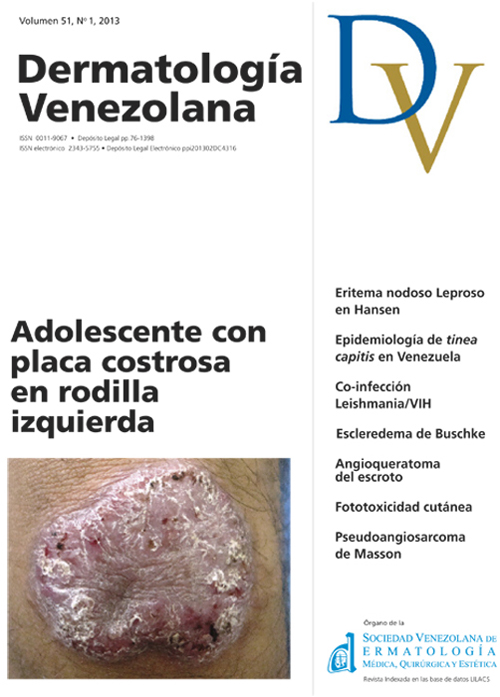Fototoxicidad cutánea inducida por Paclitaxel en paciente con cáncer de mama: Reporte de caso
Palabras clave:
fototoxicidad, placlitaxel, cáncer, phototoxicityResumen
Las reacciones de fototoxicidad a medicamentos requieren que el químico exógeno absorba luz y posteriormente alcance y se deposite en piel. La conducta terapéutica por lo general es suspender el medicamento pero en el caso de drogas antineoplásicas, que son tratamientos indispensables para la sobrevida del paciente, la conducta se reduce a evitar la exposición a la luz. Se han descrito pocos casos de fototoxicidad por placlitaxel ya que sus efectos secundarios más frecuentes incluyen neuropatía periférica, mielotoxicidad, trastornos hemodinámicos y lesiones en piel que por lo general están limitadas al sitio de inoculación. Se presenta el caso de una paciente con cáncer de mama metastásico en tratamiento con paclitaxel quien posterior a la exposición solar presenta lesiones cutáneas en áreas expuestas.
Paclitaxel-induced cutaneous phototoxicity in a patient with Breast Cancer: Case report.
Summary
Phototoxicity reactions linked to medications require light absorption by the chemical which, afterwards, must reach the skin and stay there. The therapeutic behavior generally indicates stopping the medication, but when antineoplastic drugs are being used, and are an indispensable treatment for the survival of the patient, the protocol consists in avoiding light exposure and promoting the use of sunblockers. Few cases of phototoxicity related to placlitaxel have been reported, even though side effects such as peripheric neuropathy, mielotoxicity, hemodynamic alterations and skin lesions, generally limited to the inoculation site, are more frequent. We present the case of a patient with metastatic breast cancer under treatment with placlitaxel, who after sun exposure presented phototoxicity associated to the medication, which is a unusual complication of this antineoplastic drug.

